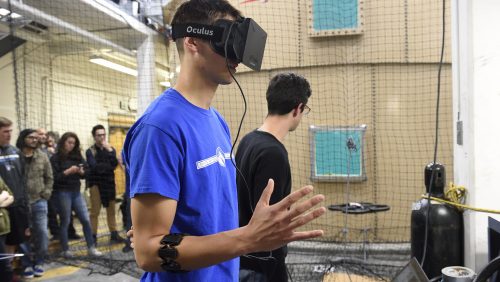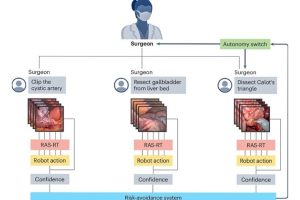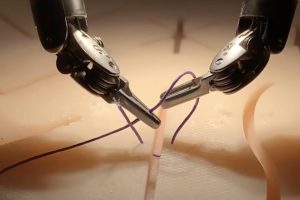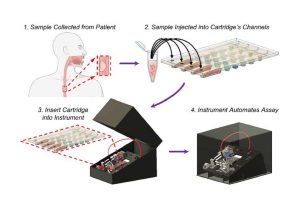Robotics research focuses on understanding and designing intelligent robotic systems through rigorous analysis, system development, and field deployment.
Hopkins researchers develop techniques and tools for kinematics, dynamics, control, estimation, and motion planning for deterministic and stochastic systems. Novel design principles are developed using modular self reconfigurable robots, self-replicating robots, and hyper-redundant manipulators.
Navigation and interaction of robots in extreme environments – e.g. deep sea, space, and the human body – is a major focus, including applications in underwater vehicles, autonomous aerial vehicles and spacecraft, and surgical robotics.
Also important to our mission is the development of robotic systems inspired by principles of biomechanics and neural control of animal movement. Closely related application areas include medicine, environmental assessment, and molecular biology.
Many of our faculty are affiliated with The Laboratory for Computational Sensing and Robotics (LCSR), one of the top robotics research sites in the world, particularly in the area of medical robotics.
Specialties
- Robotics in Extreme Environments
- Haptics and Medical Robotics
- Bio-Robotics
- Autonomous Systems, Control, and Optimization
- Human-Machine Collaborative Systems
Faculty
-
James Bellingham
Bloomberg Distinguished Professor and Executive Director of the Johns Hopkins Institute for Assured Autonomy Email:jbellingham@jhu.edu
Email:jbellingham@jhu.edu
-
 Email:jdelainebrown@jhu.eduPhone:410-516-6609
Email:jdelainebrown@jhu.eduPhone:410-516-6609
-
 Email:cauligi@jhu.edu
Email:cauligi@jhu.edu
-
Email:ncowan@jhu.eduPhone:(410) 516-5301

-
Axel Krieger
Associate Professor and Carol Croft Linde Faculty Scholar Email:axel@jhu.edu
Email:axel@jhu.edu
-
 Email:marin@jhu.eduPhone:(410) 516-5903
Email:marin@jhu.eduPhone:(410) 516-5903
-
 Email:Chen.li@jhu.edu
Email:Chen.li@jhu.edu
-
 Email:jlmoore@jhu.edu
Email:jlmoore@jhu.edu
-
Email:llw@jhu.eduPhone:(410) 516-6724

Affiliated Faculty
- Mehran Armand
- Emad Boctor
- Ralph Etienne-Cummings
- Gabor Fichtinger
- Gregory D. Hager
- Iulian Iordachita
- Peter Kazanzides
- Jin Seob Kim
- Allison M. Okamura
- Jerry Prince
- Dan Stoianovici
- Suchi Saria
- Russell H. Taylor
- Rene Vidal
Affiliated Groups, Centers, and Institutes
- Institute for Assured Autonomy
- The Laboratory for Computational Sensing and Robotics
- Center for Speech and Language Processing
- The Malone Center for Engineering in Healthcare
- Haptics and Medical Robotics (HAMR) Laboratory (Brown)
- Robot and Protein Kinematics Laboratory (Chirikjian)
- Locomotion in Mechanical and Biological Systems (Cowan)
- Advanced Medical Instrumentation and Robotics (Iordachita)
- Intelligent Medical Robotic Systems and Equipment Lab (Krieger)
- Autonomous Systems, Control, and Optimization Lab (Kobilarov)
- Terradynamics Laboratory (Li)
- Medical Robotics Lab (Stoianovici)
- Dynamical Systems and Control Laboratory (Whitcomb)
Next-Gen Robotics
At the forefront of robotics research
Animal and Robot Locomotion in Complex Terrains - In the Terradynamics Laboratory led by Chen Li, researchers study the movement of cockroaches and snakes to teach robots to navigate complex terrains like building rubble and forest floors.
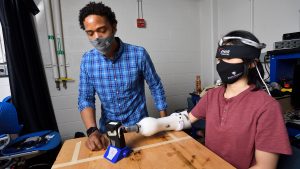
Get a Grip - Through neuroimaging, Jeremy Brown’s team discovers that prosthetics that provide haptic sensory feedback lessen the mental energy users expend when using the device.
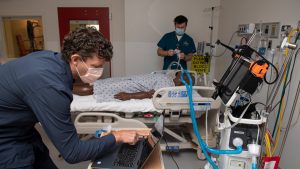
Remote Control for COVID-19 Patient Ventilators - Axel Krieger and team have built a robotic system that will give medical staff the ability to remotely operate ventilators and other bedside machines from outside intensive care rooms of patients with infectious diseases like COVID-19.
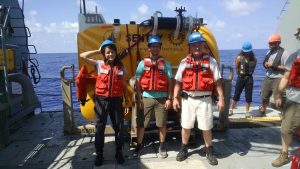
Autonomous Underwater Vehicles - Louis Whitcomb’s lab has participated in the development of underwater vehicles for oceanographic science missions, including the Nereid Under-Ice (NUI) hybrid underwater vehicle deployed under Arctic sea ice in 1014, 2016, and 2019.
